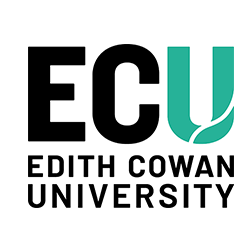Author Identifier (ORCID)
Oscar Serrano: https://orcid.org/0000-0002-5973-0046
Abstract
We need soil organic carbon (SOC) and the SOC fractions, the particulate and mineral-associated organic carbon (POC, MAOC), to understand SOC dynamics. They have implications for soil management, carbon sequestration and climate change mitigation. However, conventional laboratory measurements of the SOC fractions, which involve physical or chemical separations, are elaborate, time-consuming and expensive. Mid-infrared (MIR) spectroscopy combined with multivariate modelling can alleviate these limitations because the method can estimate SOC and its fractions rapidly, cost-effectively and accurately. Previous spectroscopic modelling has mostly ignored the compositional nature of the SOC fractions (i.e. SOC = ∑fractions), causing discrepancies in the estimation such that the sum of the fractions does not equal the total SOC. We recorded the MIR spectra (4000–450 cm−1) of 397 soil samples from across Australia and then performed a granulometric fractionation to derive three SOC fractions, the POC in the macroaggregates (250–2000μm, POCmac), POC in the micro-aggregates (50–250μm, POCmic), and MAOC (<50μm). We used the centred log ratio (CLR) method to transform the data compositionally and then modelled POCmac, POCmic, POC (POCmac + POCmic), and MAOC with the spectra, using convolutional neural networks (CNN) and CUBIST for benchmarking. We interpreted the models using the SHapley Additive exPlanations (SHAP) values and a land use classification of the data. Modelling the CLR-transformed SOC fractions with CNN maintained the composition of the fractions and improved the accuracy of the estimates (Lin's concordance correlation coefficient (ρc) of 0.58, 0.86, and 0.94 for the POCmac, POCmic, and MAOC), compared to CLR with CUBIST (ρc of 0.49, 0.84, and 0.87 for the POCmac, POCmic, and MAOC) and CUBIST with no compositional transformation (ρc of 0.53, 0.85, and 0.88 for the POCmac, POCmic, and MAOC). The SHAP values reflected the compositional modelling and identified important organic and inorganic functional groups that differed by fraction and land use. Our approach can complement conventional physical SOC fractionations and improve the cost-effectiveness of the measurements, especially when there are many samples to measure, thus enhancing our understanding of SOC dynamics.
Document Type
Journal Article
Date of Publication
3-1-2025
Volume
455
Publication Title
Geoderma
Publisher
Elsevier
School
Centre for Marine Ecosystems Research / School of Science
Funders
Australian Government DISR’s Australia-China Science and Research Fund-Joint Research Centres (ACSRIV000077) / Australian Research Council’s Discovery Projects / The Pawsey Supercomputing Centre / Australian Government / Government of Western Australia
Grant Number
ARC Number : DP210100420
Creative Commons License

This work is licensed under a Creative Commons Attribution 4.0 License.


Comments
Zhang, M., Shen, Z., Walden, L., Sepanta, F., Luo, Z., Gao, L., ... & Rossel, R. A. V. (2025). Deep learning of the particulate and mineral-associated organic carbon fractions using a compositional transform and mid-infrared spectroscopy. Geoderma, 455. https://doi.org/10.1016/j.geoderma.2025.117207